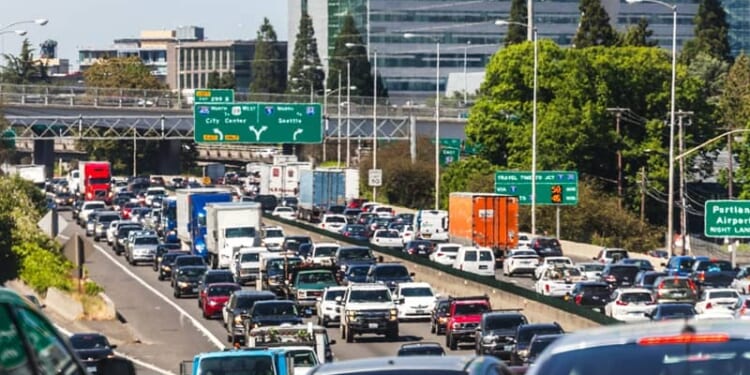By Randal O’Toole
The Oregon Department of Energy “Oregon Energy Strategy” for saving energy is doomed to failure. A key part of the strategy calls for prioritizing multimodal transportation over roads and promoting development patterns that make it easier to live without a car. As shown in Comments on the strategy by Cascade Policy Institute adjunct scholar Randal O’Toole, this strategy has never worked.
The Portland area has followed this policy since the late 1970s, when it cancelled a proposed freeway and used the funds to instead build the region’s first light-rail line. Since 1982, when the last new freeway opened in the Portland area, the region’s population has doubled. Rather than reduce driving, the latest data show that driving since then has doubled while transit’s share of travel has declined.
Since 1980, the region has built 60 miles of light-rail lines and nearly 400 miles of bikeways and bike lanes. Yet transit’s share of commuting declined from 9.6 percent to 7.7 percent in 2019, while driving alone to work grew from 64.6 percent to 68.4 percent. Walking and cycling increased only slightly from 4.9 percent to 5.7 percent but have fallen from their 2014 peak of 6.4 percent.
The trend that actually reduced auto commuting was one neither anticipated nor promoted by planners: people working at home. This was already increasing before the pandemic from 1.9 percent of workers in 1980 to 8.0 percent in 2019, but the pandemic caused it to zoom to 20.7 percent in 2024.
Between 2019 and 2024, the number of Portland-area workers working remotely grew by 171 percent. This reduced the number of auto commuters by 6 percent but it reduced transit commuters by 46 percent and bicycle and pedestrian commuters by 22 percent. Clearly, Portland-area residents were not doing what planners wanted them to do, especially since people working at home tend to drive as many miles as when they drove to work, they just drive them at different times of the day.
Cars use more energy and emit more greenhouse gases in congestion, something not accounted for by state or local transportation planning models. The Texas Transportation Institute estimates that Portland’s decision not to build more freeways increased the amount of fuel wasted due to congestion from 5.7 million gallons in 1982 to 35.1 million gallons in 2019. This represents 282,000 tons of additional greenhouse gas emissions in 2019.
If everyone riding electric-powered light rail would have otherwise ridden buses or driven cars, the trains saved only about 42,000 to 45,000 tons of emissions. If the money spent on light rail had instead been spent cost-effectively reducing congestion, it could have saved more than six times as much greenhouse gases.
The draft energy strategy also claims that getting more people to live in high-density multifamily housing would reduce driving. In fact, studies show that people who want to drive less are attracted to such developments, but the developments themselves don’t reduce driving. Moreover, the congestion caused by dense development can increase greenhouse gas emissions per person above those for people living in car-friendly suburbs.
The U.S. Department of Energy has also found that multifamily housing uses more energy per square foot than single-family housing. It also uses more in construction because of the need for more concrete and steel. Thus, multifamily housing is not a way to save energy.
Instead of linking the state energy plan to a policy that is already known to fail, the state could expand its existing program to encourage people to drive more fuel-efficient cars. The current program offers a limited amount of money to people for electric cars and electric vehicle chargers. Expanding this program to promote all fuel-efficient autos, including petroleum-powered vehicles that get, say, 40 miles per gallon or better, would save energy and reduce emissions at a far lower cost than prioritizing multimodal transportation and emphasizing developments that supposedly discourage driving.
For a PDF of this Cascade Commentary click HERE.
For a PDF of O’Toole’s public comments submitted to the Oregon Department of Energy Draft, click HERE.
Randal O’Toole is an Adjunct Scholar at Cascade Policy Institute, Oregon’s free market public policy research organization. He is a transportation and land-use policy analyst and the author of several books, including American Nightmare: How Government Undermines the Dream of Homeownership and Romance of the Rails: Why the Passenger Trains We Love Are Not the Transportation We Need. He writes from Central Oregon.










